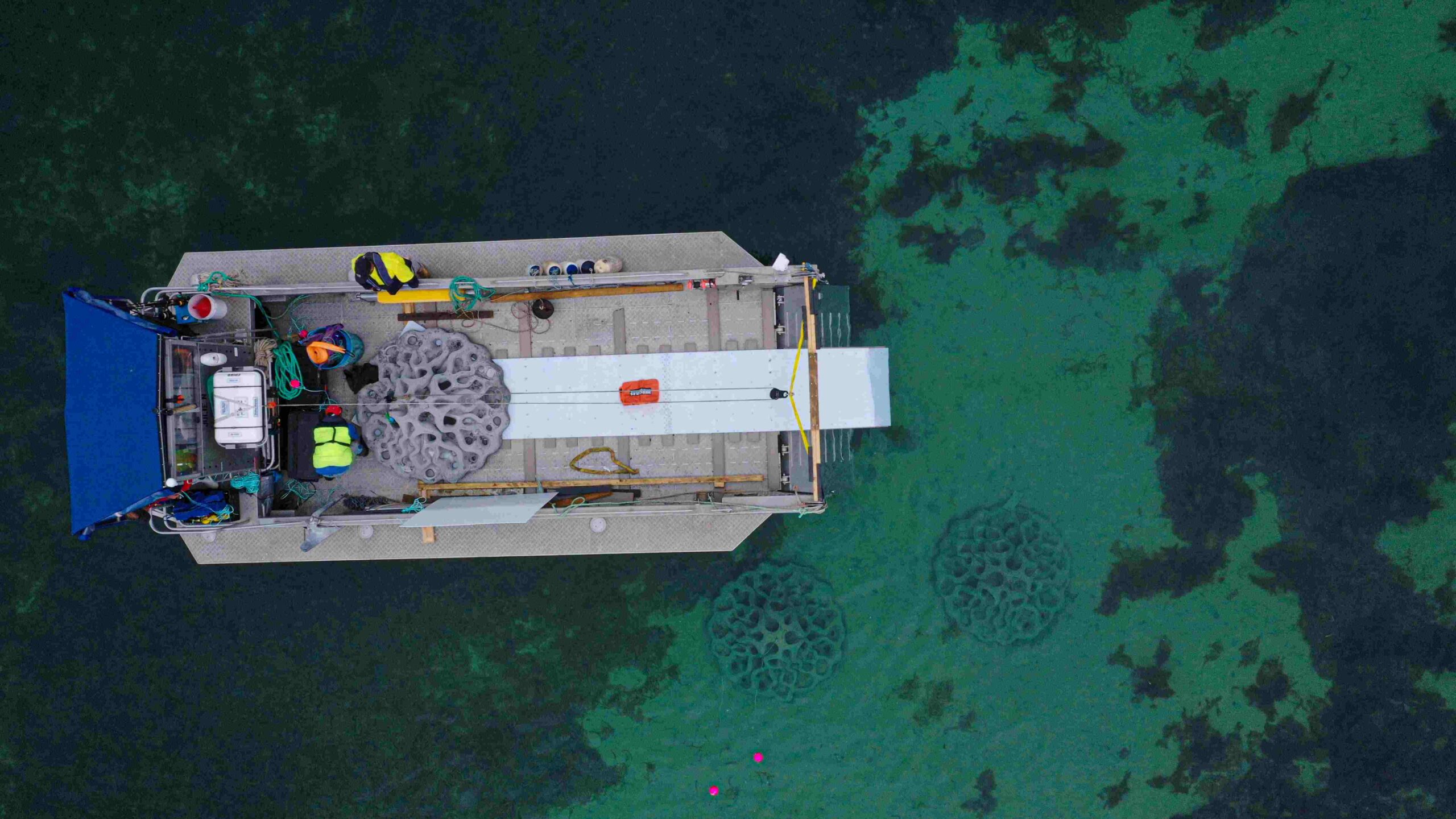Biodiversity monitoring can be challenging, particularly when the focus is on animals that are difficult to detect using traditional methods or when a species’ distribution is unknown. To complement existing survey methods, scientists have developed an innovative detection technique using environmental DNA (‘eDNA’).
AWC staff and partners are currently deploying eDNA monitoring techniques across the country, trialling methods for various targeted surveys and sampling.
 Larissa Potter/AWC
Larissa Potter/AWCWhat is eDNA?
When animals move through their environment, they leave behind little traces of DNA in the form of shed skin cells, scales, hair, faeces, or bodily fluids. This genetic material can be extracted from environmental samples and processed in the laboratory to determine its originating species. eDNA is often used to detect a specific species of interest, but it can also be used for broad-scale biodiversity assessments to discern multiple species (a process known as ‘metabarcoding’).
The most common use of eDNA is currently in aquatic environments, such as ponds, rivers, lakes, wetlands and oceans. In this case, DNA is isolated in the following steps:
1. Collecting samples from the environment using sterilised containers to scoop up the water
2. Filtering the water through a filter membrane to capture microparticles in the water
3. Extracting the DNA from all other material on the filter membrane using a DNA extraction kit
This extraction will include all the DNA that was present in the water sample, which scientists can then process in the lab to determine if any of it is from the species they are searching for.
One of the limitations of this method is that DNA in the environment degrades over time due to various environmental conditions, such as high temperatures or bacteria. This means there is only a short period when eDNA can be detected, so a negative result does not necessarily mean a species has not been in that environment. While this short detection time can be challenging, it also means that a positive result indicates a species was recently present in the environment.
 Wayne Lawler/AWC
Wayne Lawler/AWCHow is eDNA used in conservation?
eDNA has become an increasingly powerful and cost-effective conservation tool for improving the detection of native species. Importantly, it is also a useful tool for identifying the presence of invasive species, where early detection is critical for effective management.
One of the key benefits of eDNA is that sampling does not require the species to be captured, making the process less intrusive and stressful for target species and avoiding any potential habitat destruction (both of which are important considerations, particularly when working with threatened species). Unlike many traditional detection methods, sampling also does not require long hours in the field or specialised taxonomic knowledge and survey skills. As a result, eDNA samples can be collected by ‘citizen scientists’ and other non-specialists before being sent off for analysis, making it an accessible and efficient data collection method.
 Ian Bool/AWC
Ian Bool/AWCHow is eDNA being used at AWC?
Unfortunately, cane toads are slowly moving across Australia, and have now been identified in the Kimberley region. Cane toads pose a serious threat to native wildlife, such as the Wijingarri (Northern Quoll (Dasyurus hallucatus). Unsuspecting native animals that naturally prey on amphibians will attempt to eat the toads but unfortunately succumb to their fatal toxins. To mitigate the impacts of cane toads on wildlife, AWC are working in partnership with the Department of Biodiversity, Conservation and Attractions (DBCA) and Dambimangari Aboriginal Corporation (DAC) to undertake conditioned taste aversion (CTA) training for Northern Quolls on Dambimangari Country. This CTA training involves deploying sausages made from toad meat laced with a nausea-inducing chemical, which aims to teach the quolls to avoid eating cane toads when they encounter them in the future.
As part of this project, AWC ecologists and DAC rangers are collecting eDNA water samples to test for the presence of cane toads across Dambimangari Country. Samples have been collected at a variety of sites, including the highland areas of Yampi Sound Training Area and a number of islands and rivers. Positive eDNA results are being recorded at a number of these sites, supported by the subsequent detection of cane toads at these same locations on camera traps.
The detection of cane toads using eDNA is allowing AWC and our partners to continuously update our estimate of the cane toad front in the Kimberley. Mapping where cane toads are present is vital for the selection of camera deployment sites to monitor populations of Northern Quolls post-cane toad arrival and determine whether this CTA training program is effective. Research to increase our understanding of invasive species is vital for the delivery of science-informed conservation land management programs across AWC sanctuaries and partnership sites. Using eDNA technology, this project is doing exactly that – forming an important first step in mitigating the impact of cane toads and protecting native wildlife in the Kimberley.








